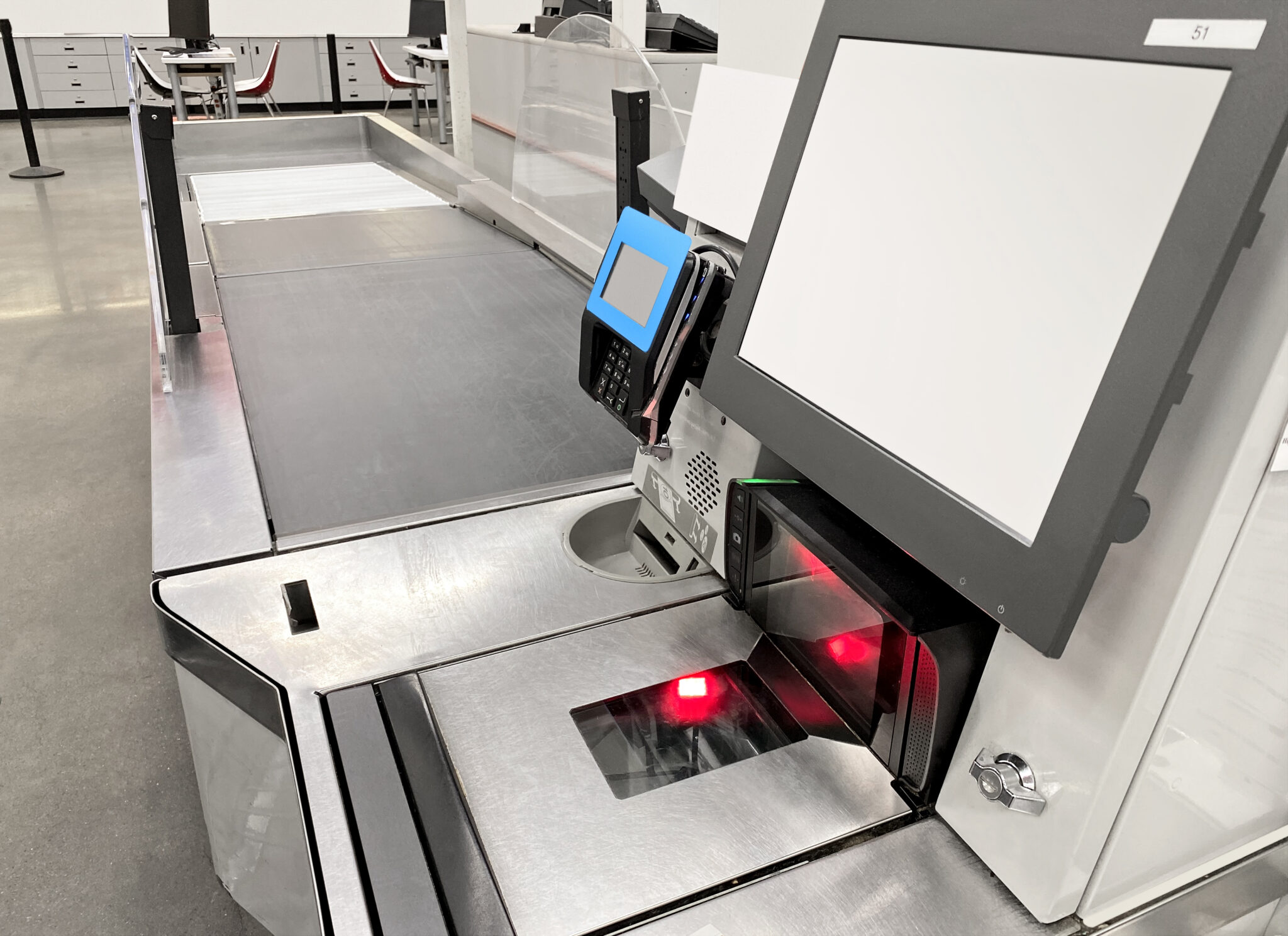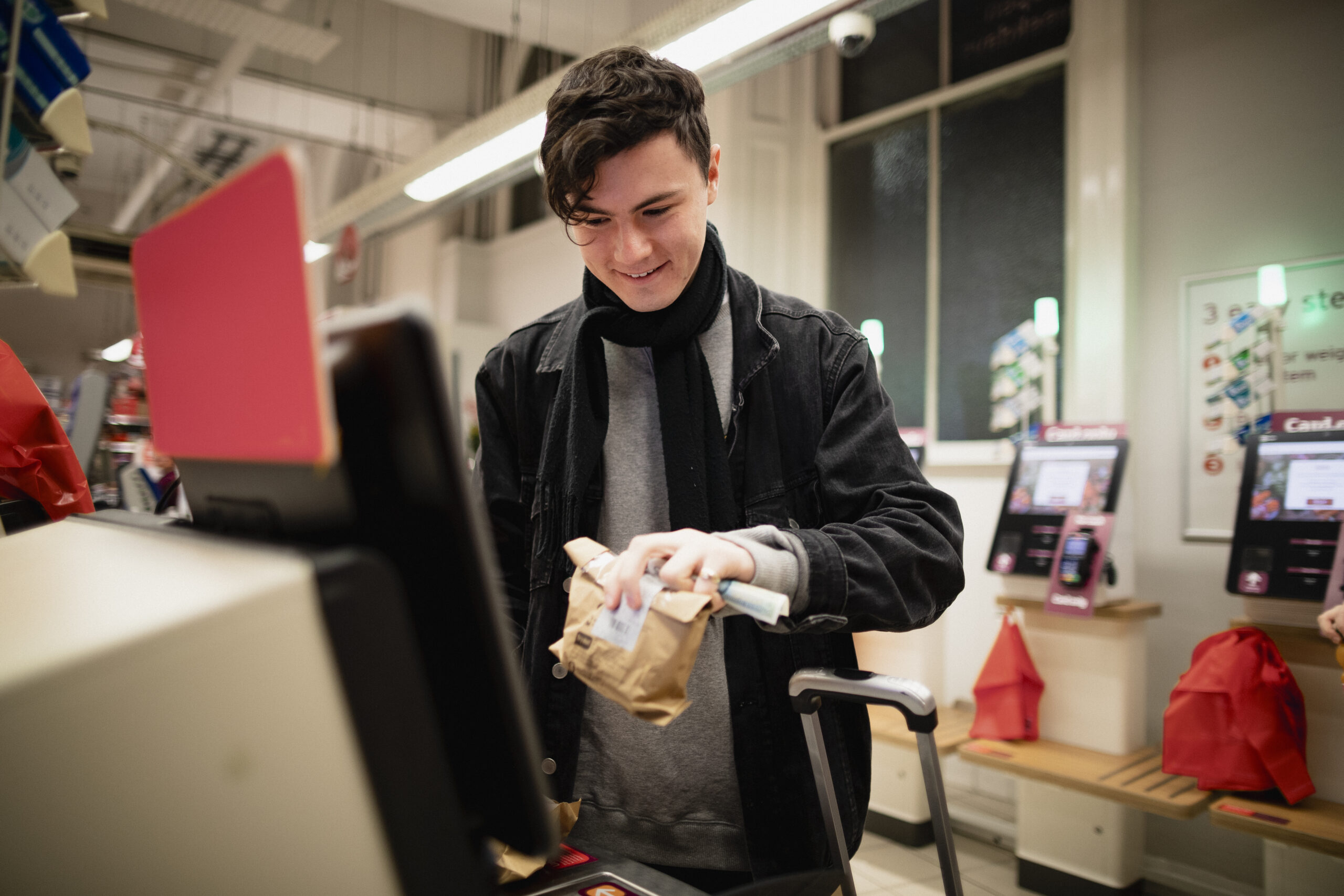Shrink, or the unexplained loss of inventory, is a challenge for retailers of all sizes. In a cost-of-living crisis, the cost to the global retail industry is reaching new heights.
There are several factors that contribute to shrink including theft, employee error, customer error and fraud. Shrink can occur at any point in the supply chain, from the distribution centre to the sales floor.
However, it is in the front end or the checkout area that is particularly vulnerable to shrink. This includes missed scans and product swapping on traditional checkouts and self checkouts. Items may also be taken from merchandise stands and kiosk areas.
It is estimated that 25% to 55% of shrink come from the front end.
At CLX, we are front-end specialists, working with the world’s biggest retailers to design and deliver solutions proven to minimise loss and shrink in the checkout and other service areas.
We have seen what works and what doesn’t. Here are our five biggest lessons learnt:
1. “Shrink management” needs to be part and parcel of delivering excellent customer service and safety
Shrink initiatives originate from the total loss department of the store support centre. When the goal is to implement new technology or process on time and to budget, we have seen a disconnect from project objectives to how it impacts customers and team members.
We have seen “shrink training” as an add-on, resulting in hastily created content, mixed messaging, and information overload on floor teams.
Shrink needs to be part and parcel of delivering excellent customer service and safety. Any shrink training needs to be embedded into existing customer service frameworks or principles and integrated into business-as-usual training such as induction and refresher training.
2. Customers need support even with the most discreet and less obtrusive technologies
We like the emergence of non-intrusive technologies which is great for customer experience.
Skip Scan technology, for example, is AI powered video analytics that can detect unusual behaviours at self checkouts.
But it requires engaged and active team members to manage the unexpected when a customer does see it for the first time whether they have been caught red handed or if they have made a genuine mistake.
Team members need to know what to do in each and every scenario.
3. A tiered loss strategy mapped to the risk profile of each store
Retailers should use all available data to identify the extent in which the front end is contributing to shrink and invest in the right solution mapped to risk profiles.
Take smart gates for example, for a low-risk store, retailers may choose ‘fake gates’ which opens for everyone, relying only on presence to encourage compliance. This may be an option in the short term, but it may not be long until this is exposed and something more is required.
A medium-risk store may require less upfront investment and retailers can consider gates that require every customer to scan a receipt before the gates open. This heavily impacts customer experience, so investment is required to support team members and customers through this change.
A high-risk store may need the smartest of gates including cameras which tracks people at the front end. Gates will only open if no unusual behaviour has been detected.
4. Design a smart front end layout
We see higher incidences of opportunistic theft when the front end is cramped and congested – when there is ‘too much going on’, when team members are busy and flustered, when there is a sense that ‘no one is watching.’
At CLX, we are experts are designing spacious checkout areas that removes obvious blind spots, giving team members maximum visibility to see the area at all times.
This is a deterrent to incidental theft, but most importantly team members can also see customers who may need help and can provide that support quickly.
5. Escalation and de-escalation: Keeping your team members, customers and community safe
At CLX, we do not talk about loss without talking about safety. Every loss strategy must be underpinned by plans to keep everyone safe.
The threat of systemic and organised crime is ever-present. Team members can be supported with panic buttons or duress alarms, and need to be trained on how to use these.
Escalation training and understanding the role they play, as well as the role of team leaders in store, safety teams in the head office, on-site security guards, and the police is crucial to keeping team members, customers, and community safe.
Organised crime is different to incidental theft, and they carry different risks and as such, de-escalation training (in the case of incidental theft) can be just as important as escalation training (in the case of organised crime).
A part of managing shrink is positive behaviours and creating a culture that supports this. Reinforcement learning is essential when change is constant, and team member turnover is high.
Equip your store leaders with the right capability to lead, observe and coach their team so shrink isn’t just ‘flavour of the month’ and forgotten about when the next initiative comes along. When new skills are reinforced and embedded into business-as-usual, we see sustained benefits for the long term.
CLX specialises in delivering loss prevention and shrinkage solutions at the front end. We have implemented strategies and solutions which have been proven to reduce loss while improving customer and team member satisfaction.
Get in touch to find out how we can support your loss/shrinkage targets.
Contact:
Mark Packiyanathan, Managing Director, Australia – mark@clxprofessionals.com
Michelle Vanstaden, Managing Director, UK and Europe – michelle@clxprofessionals.com
Sarah Campbell, Managing Director, Emerging Markets, Strategy and Partnerships –sarah@clxprofessionals.com






